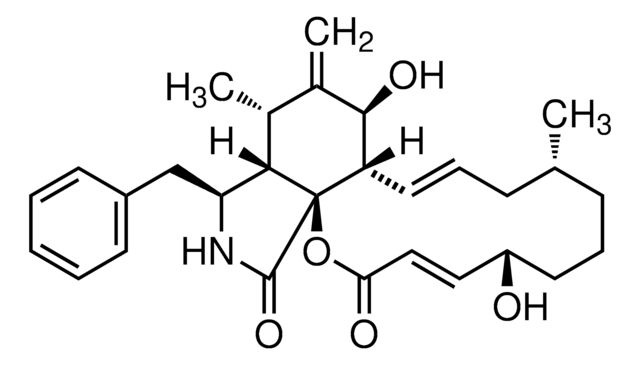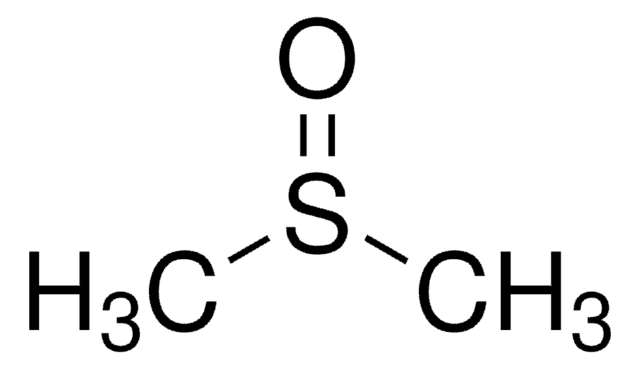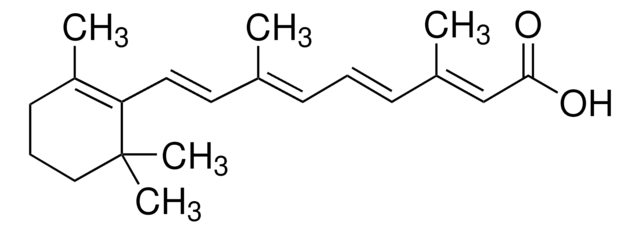Recommended Products
biological source
synthetic (organic)
form
powder
storage temp.
−20°C
Looking for similar products? Visit Product Comparison Guide
Application
Polydeoxyadenylic acid (Poly(dA)) may be used in physicochemical studies on small molecule binding and interaction and self-assembly dynamics that affect its biological functions.
Unit Definition
One unit will yield an A260 of 1.0 in 1.0 ml of water (1 cm light path).
WGK
WGK 3
Flash Point(F)
Not applicable
Flash Point(C)
Not applicable
Personal Protective Equipment
dust mask type N95 (US), Eyeshields, Gloves
Certificates of Analysis (COA)
Search for Certificates of Analysis (COA) by entering the products Lot/Batch Number. Lot and Batch Numbers can be found on a product’s label following the words ‘Lot’ or ‘Batch’.
Already Own This Product?
Find documentation for the products that you have recently purchased in the Document Library.
Eduardo Gorab et al.
Chromosome research : an international journal on the molecular, supramolecular and evolutionary aspects of chromosome biology, 17(6), 821-832 (2009-09-19)
Antibodies to specific nucleic acid conformations are amongst the methods that have allowed the study of non-canonical (Watson-Crick) DNA structures in higher organisms. In this work, the structural limitations for the immunological detection of DNA.RNA hybrid duplexes were examined using
Yusuke Sanada et al.
The journal of physical chemistry. B, 116(1), 87-94 (2011-11-18)
A certain length of poly(deoxyadenylic acid) (dA(X)) can form a novel complex with β-1,3-D-glucan schizophyllan (SPG) with a stoichiometric composition of one dA binding two main chain glucoses. We measured dilute solution properties for the complex with light and small-angle
Sooyeon Kim et al.
The journal of physical chemistry. B, 115(51), 15399-15405 (2011-11-17)
The investigation on the self-assembly of polydeoxyadenylic acid (poly(dA)) is highly important to fully understand its biological function and for its application in the field of nanotechnology. Using the fluorescence resonance energy transfer (FRET) technique, we report investigations for the
Paul D Dinkel et al.
Biochemistry, 54(30), 4731-4740 (2015-07-16)
Tau fibrils are the main proteinacious components of neurofibrillary lesions in Alzheimer disease. Although RNA molecules are sequestered into these lesions, their relationship to Tau fibrils is only poorly understood. Such understanding, however, is important, as short fibrils can transfer
Our team of scientists has experience in all areas of research including Life Science, Material Science, Chemical Synthesis, Chromatography, Analytical and many others.
Contact Technical Service



